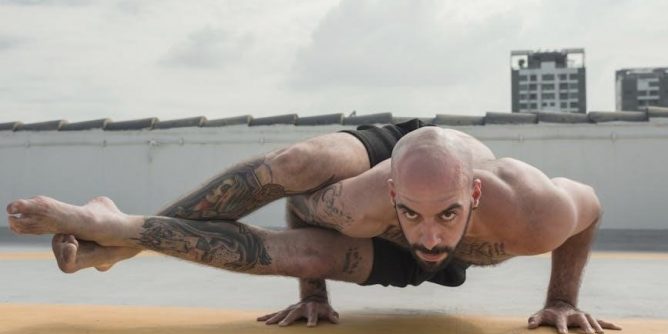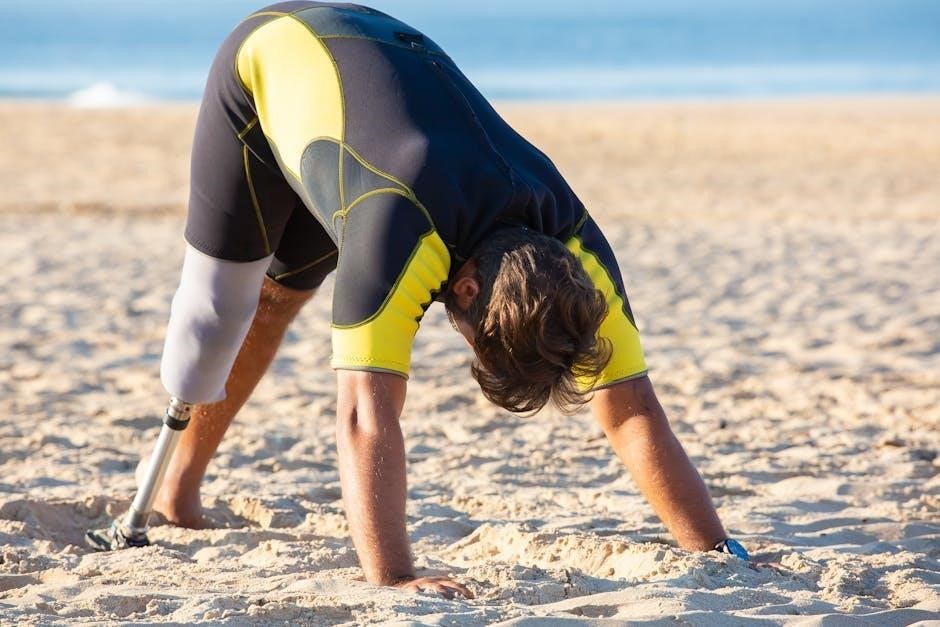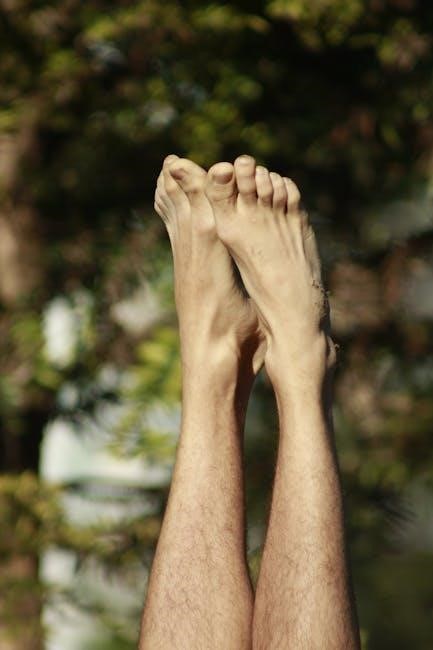
Discover the holistic approach outlined in Patanjali’s Yoga Sutras, offering a path to inner harmony and self-realization through eight ethical, physical, and spiritual practices. Downloadable PDF guides provide comprehensive insights for both beginners and experienced yogis, detailing each limb’s role in achieving balance and enlightenment.

Overview of Patanjali’s Yoga Sutras and Their Significance

Patanjali’s Yoga Sutras, composed around 500 BC to 200 BC, are a foundational text of yoga philosophy. This concise yet profound scripture outlines the Eight Limbs of Yoga, providing a structured path to spiritual growth. The sutras emphasize ethical living, self-discipline, and meditation, offering practical wisdom for balancing body, mind, and spirit. Their significance lies in their timeless guidance, making them a cornerstone for understanding yoga’s holistic approach. These teachings remain essential for seekers of liberation and inner peace, bridging ancient wisdom with modern practice.

Yama: The First Limb of Yoga
Yama, the first limb, consists of five ethical principles: Ahimsa (non-violence), Satya (truthfulness), Asteya (non-stealing), Brahmacharya (self-control), and Aparigraha (non-possessiveness), guiding harmonious living.
Key Principles of Yama, Including Ahimsa, Satya, Asteya, Brahmacharya, and Aparigraha
Yama forms the foundation of Yoga, emphasizing ethical living. Ahimsa teaches non-violence in thought, word, and deed. Satya promotes truthfulness in all interactions. Asteya encourages non-stealing, respecting others’ property. Brahmacharya advocates self-control, particularly in sexual energy, fostering moderation. Lastly, Aparigraha emphasizes non-possessiveness, detaching from material excess. Together, these principles guide individuals toward a morally upright and compassionate lifestyle, essential for spiritual growth and harmony within society.

Niyama: The Second Limb of Yoga
Niyama, the second limb of Yoga, involves personal practices like Sauca (cleanliness), Santosa (contentment), Tapas (discipline), Svadhyaya (self-reflection), and Ishvara Pranidhana (surrender to a higher power).
Key Practices of Niyama, Including Sauca, Santosa, Tapas, Svadhyaya, and Ishvara Pranidhana
Niyama, the second limb of Yoga, focuses on personal practices that foster self-discipline and inner growth. Sauca (cleanliness) involves physical and mental purity. Santosa (contentment) encourages acceptance and gratitude. Tapas (discipline) promotes self-control and determination. Svadhyaya (self-reflection) involves studying sacred texts and introspection. Ishvara Pranidhana (surrender to a higher power) cultivates devotion and humility. Together, these practices help refine character, fostering a deeper connection to oneself and the universe, as outlined in Patanjali’s Yoga Sutras and various downloadable PDF guides.
Asana: The Third Limb of Yoga
Asana involves physical postures that prepare the body for meditation, promoting strength, flexibility, and balance. Key postures include standing, seated, and inverted poses, as outlined in PDF guides.
Key Postures and Their Role in Preparing the Body for Meditation
Asana, the third limb, involves physical postures that strengthen, flex, and balance the body. Standing poses like Tadasana establish alignment, while seated poses such as Padmasana and Baddha Konasana promote stillness. Inverted postures like Viparita Karani and Adho Mukha Svanasana refresh the mind and body. These postures prepare the body for meditation by enhancing circulation, calming the nervous system, and improving focus. Detailed in PDF guides, they offer step-by-step instructions to master each pose, ensuring readiness for deeper meditative states. Regular practice of Asana fosters physical awareness and mental clarity, essential for progressing in Yoga.

Pranayama: The Fourth Limb of Yoga
Pranayama, the fourth limb, involves breathing techniques like Nadi Shodhana and Kapalabhati to balance life force, calm the mind, and prepare for meditation and higher consciousness.
Key Breathing Techniques for Balancing the Life Force
Pranayama, the fourth limb, involves specific breathing practices like Nadi Shodhana (alternate nostril breathing) and Kapalabhati (breath of fire) to harmonize the life force. These techniques regulate breath, calm the nervous system, and prepare the mind for meditation. Other practices include Bhramari (bee breath) for relaxation and Ujjayi (ocean breath) for steadying the mind. Regular Pranayama balances energy, enhances vitality, and deepens spiritual connection. Downloadable PDF guides detail these methods, offering step-by-step instructions for mastering them as part of a holistic yoga practice. They are essential for advancing toward higher states of consciousness and inner peace.
Pratyahara: The Fifth Limb of Yoga
Pratyahara involves sense withdrawal and mental detachment, freeing the mind from external distractions. It prepares the consciousness for deeper focus, bridging the gap to Dharana and Dhyana.
Key Concepts of Sense Withdrawal and Mental Detachment
Pratyahara is the practice of withdrawing the senses from external stimuli, fostering mental detachment and inner calm. It involves training the mind to observe sensory inputs without attachment, creating a boundary between the external world and internal consciousness. This limb prepares the practitioner for deeper meditation by quieting mental chatter and distractions. Techniques include introspection, mindfulness, and mindfulness practices to cultivate awareness and control over sensory experiences. By mastering Pratyahara, one can achieve greater focus and clarity, laying the foundation for the higher limbs of Yoga, such as Dharana and Dhyana.

Dharana: The Sixth Limb of Yoga
Dharana involves cultivating concentration and focus by fixing the mind on a single point, such as a mantra, breath, or object. This practice quiets the mind, preparing it for meditation and higher states of consciousness.
Key Techniques for Developing Concentration and Focus
Dharana involves specific techniques to enhance concentration, such as focusing on a single point like the breath, a mantra, or a visualization. Regular meditation and mindfulness practices help quiet the mind, reducing distractions. Practitioners may use external objects, such as a candle flame, or internal mental images to anchor their attention. Over time, these exercises strengthen mental clarity and discipline, preparing the mind for deeper states of meditation and introspection. Consistency and patience are essential for mastering this limb and achieving mental focus.

Dhyana: The Seventh Limb of Yoga
Dhyana is a meditative state of uninterrupted concentration, where the mind absorbs deeply into the object of focus, preparing for the final limb, Samadhi.
Key Practices for Achieving a State of Meditation
Dhyana, the seventh limb, involves focused concentration and meditation to attain a tranquil mental state. Key practices include sustained attention on a single point, such as the breath or a mantra, to quiet the mind. Regular mindfulness and introspection help cultivate inner awareness. A serene environment and consistent practice are essential for deepening meditation. This limb prepares the practitioner for Samadhi, the ultimate unity of consciousness. Downloadable PDF guides offer detailed techniques and insights for mastering Dhyana and progressing toward spiritual harmony.

Samadhi: The Eighth Limb of Yoga
Samadhi is the ultimate state of unity and consciousness, where the self dissolves into the universe, achieving liberation and eternal bliss. Downloadable PDF guides explore this profound limb in depth.
Key Concepts of Unity and the Ultimate State of Consciousness
Samadhi represents the culmination of the eight limbs, where the individual self (jiva) merges with the universal consciousness (Brahman), achieving ultimate unity and liberation. This state transcends the ego and duality, leading to eternal bliss and self-realization. As described in Patanjali’s Yoga Sutras, Samadhi is the final goal of yoga, where the practitioner experiences a profound sense of oneness with existence. Downloadable PDF guides provide detailed insights into this ultimate state, offering a deeper understanding of its significance and attainment through dedicated practice.
Download comprehensive PDF guides on the Eight Limbs of Yoga for deeper insights into Patanjali’s teachings. These resources offer detailed explanations and practical applications for holistic living and spiritual growth, perfect for both beginners and advanced practitioners seeking self-realization and inner harmony;
Downloadable PDF Guides for Studying the Eight Limbs of Yoga
Comprehensive PDF guides on the Eight Limbs of Yoga offer detailed insights into Patanjali’s teachings, perfect for both beginners and advanced practitioners. These resources provide in-depth explanations of each limb, from Yama to Samadhi, along with practical applications for daily life. Downloadable for free, these guides are easily accessible and portable, allowing you to study the principles of yoga anytime, anywhere. They serve as invaluable tools for deepening your understanding of this ancient philosophy and integrating its practices into your journey toward holistic well-being and spiritual growth.